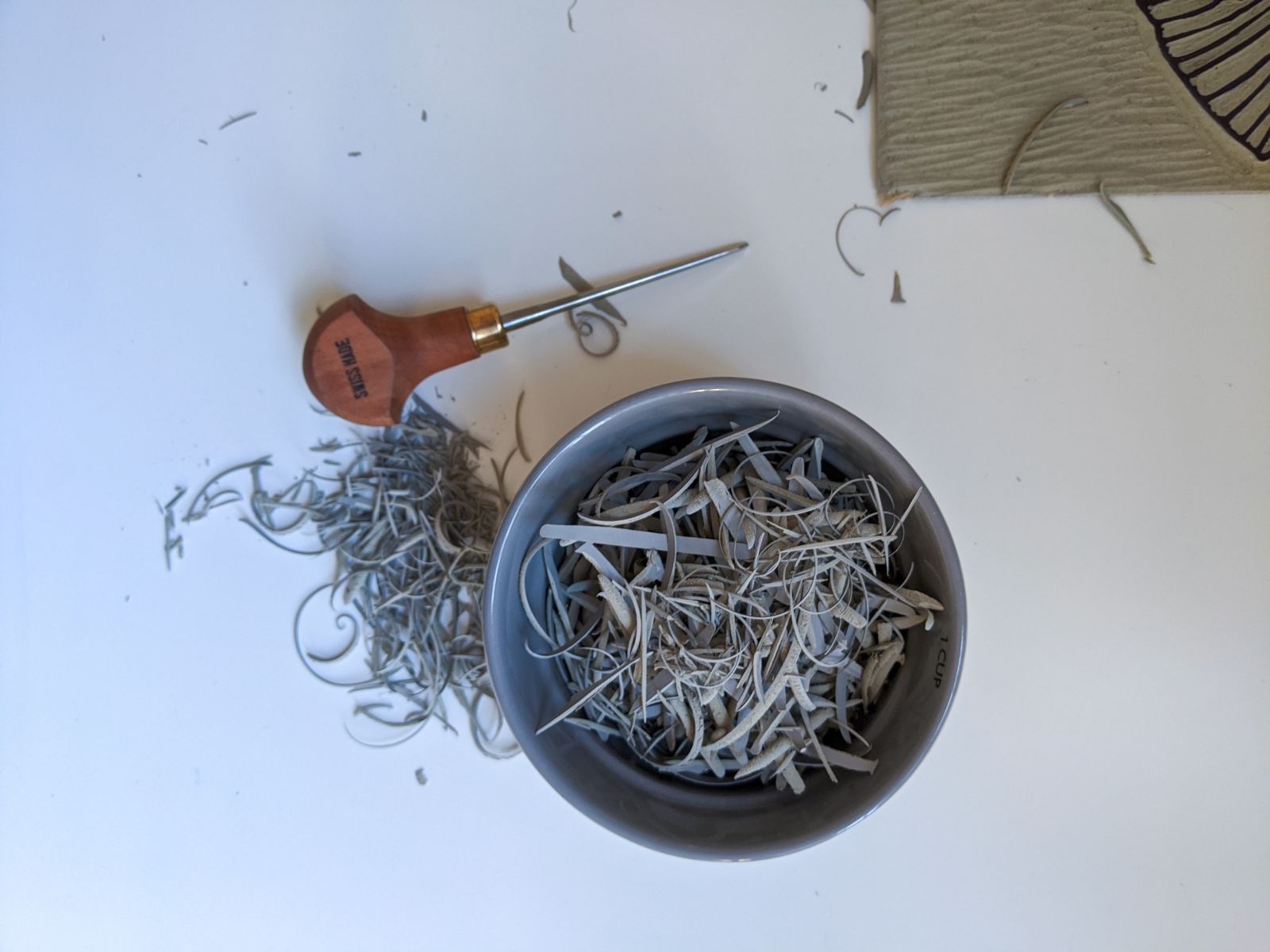Lino printing, a beautiful and expressive art form, has captivated both artists and audiences for centuries. This versatile and timeless printmaking method involves carving a design into a linoleum block, then inking and pressing the block onto paper or fabric to create a print. Throughout history, various artists have left an indelible mark on this medium, creating iconic lino prints that have stood the test of time. In this article, we delve into the lives and works of ten such artists, taking a moment to pause and appreciate their genius after each one.
Table of Contents
Pablo Picasso (1881-1973)
Pablo Picasso, the renowned Spanish painter, sculptor, and printmaker, is celebrated for his contribution to the world of art. Picasso’s work in lino printing showcases his penchant for experimentation and his ability to create striking images with minimal lines. Notably, he helped popularise the reduction lino print method and it is debated if Picasso invented the reduction linocut method, which allows artists to create multicoloured prints from a single block. His lino print ‘Bacchanal with Goat‘ is characterised by its bold, fluid lines, and vivid colours, serving as a testament to the artist’s unyielding creativity.
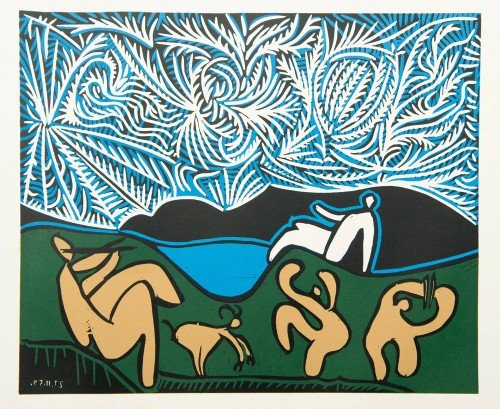
Pablo Picasso – Bacchanal with Goat (1962)
Henri Matisse (1869-1954)
Henri Matisse, a French artist known for his use of color and original draughtsmanship, was a leading figure in modern art. His lino printing work showcases a profound understanding of form and composition. In his famous print ‘Dors, Dormeuse aux Longs Cils (Variant IV),’ Matisse demonstrates his mastery of the medium through the use of simplistic, black and white imagery. This piece reflects the artist’s innovative approach to art, proving that he could captivate audiences even without his signature vibrant colours.
If you’re interested in freelance jobs for artists, Matisse’s career is a testament to the enduring impact of artistic expression.
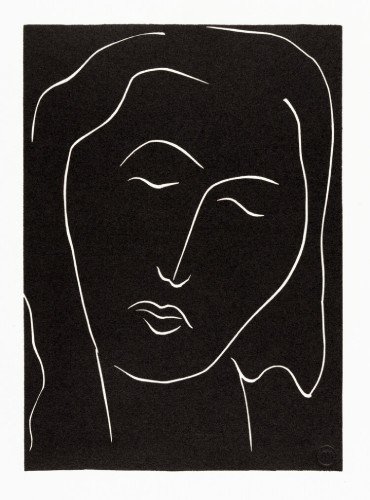
Henri Matisse – Dors, Dormeuse aux Longs Cils Variant IV (1944)
Lin Onus (1948-1996)
Lin Onus, an Indigenous Australian artist of Yorta Yorta and Scottish descent, is recognised for his contributions to contemporary Indigenous art. His work in lino printing demonstrates a deep connection to his cultural heritage while incorporating modern influences. ‘Dislocation Yellow 2000,’ a striking lino print, showcases Onus’s ability to blend traditional and contemporary elements, resulting in a powerful visual statement. The piece features a person as the focal point, surrounded by bold colours of yellow, black, and red, highlighting his remarkable skill in composition and his keen eye for detail.
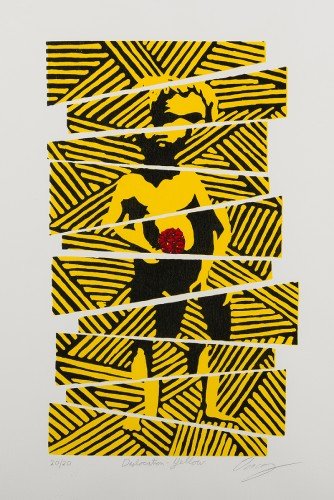
Lin Onu – Dislocation Yellow 2000 (1986)
Margaret Preston (1875-1963)
Margaret Preston, an Australian artist and printmaker, is celebrated for her distinctive modernist style and her promotion of Australian flora and fauna as subjects in art. Her work in lino printing highlights her strong interest in nature and her desire to create a uniquely Australian visual language. ‘West Australian Banksia,’ an iconic lino print by Preston, displays her ability to capture the essence of the native Australian plant with a bold, graphic style, showcasing her mastery of line and form.
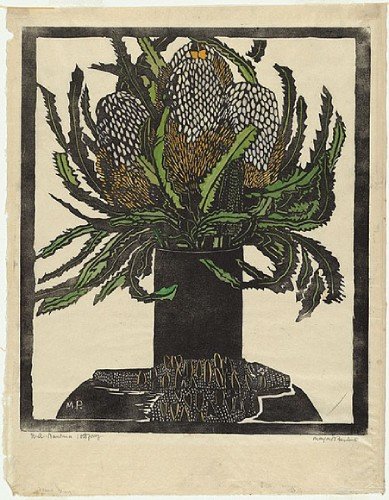
Margaret Preston – West Australian Banksia (1929)
Edward Bawden (1903-1989)
Edward Bawden, a British painter, illustrator, and graphic artist, was renowned for his work in printmaking, particularly his linocuts. Bawden’s lino prints often depicted architectural and urban scenes, reflecting his keen eye for detail and his ability to create striking compositions. ‘Liverpool Street Station,’ one of his most famous lino prints, captures the bustling atmosphere of the busy London station with a captivating sense of depth and movement. Bawden’s skilful use of line and form brings the scene to life, demonstrating his mastery of the lino printing medium.
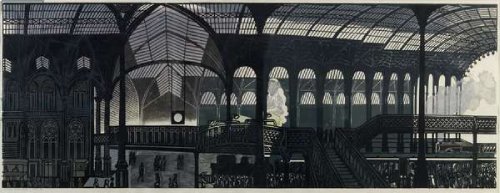
Edward Bawden -Liverpool Street Station (1961)
Sybil Andrews (1898-1992)
Sybil Andrews, a British-born Canadian artist, is renowned for her dynamic lino prints, which often depicted scenes of labor, sport, and leisure. Her unique style combined elements of Futurism and Vorticism, resulting in bold, rhythmic compositions. ‘Racing,’ one of Andrews’ most famous lino prints, captures the energy and speed of a horse race, with its dynamic lines and sense of movement. This print showcases her innovative approach to the medium and her ability to convey a sense of excitement and motion through her art.
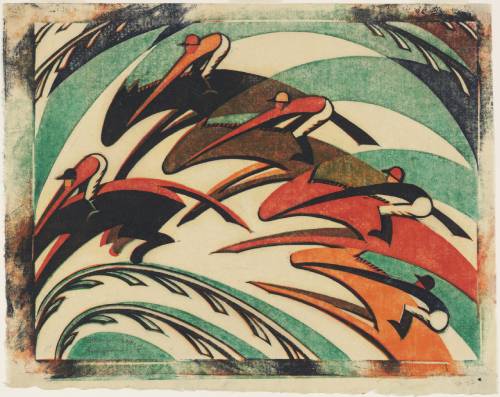
Sybil Andrews – Racing (1934)
Elizabeth Catlett (1915-2012)
Elizabeth Catlett, an African-American graphic artist and sculptor, is best known for her powerful depictions of African-American and Mexican women. Her work in lino printing often addressed themes of social justice, race, and identity. ‘Sharecropper,’ one of Catlett’s most famous lino prints, portrays a determined African-American woman wearing a sunbonnet. This striking piece highlights the artist’s skill in creating impactful images through her use of strong lines, bold contrast, and a deep understanding of her subject matter.

Elizabeth Catlett -Sharecropper (1952)
Wassily Kandinsky (1866-1944)
Wassily Kandinsky, a Russian painter and art theorist, is credited as one of the pioneers of abstract art. His work in lino printing showcases his exploration of form, color, and composition. ‘The Mirror,’ a significant lino print by Kandinsky created in 1907, is notable for its intricate technique. The line block was inked in black, while the color block was inked with watercolour pigment applied through a stencil in five different colours. This method resulted in subtle, evanescent effects, giving the print a mosaic, jewel-like quality.
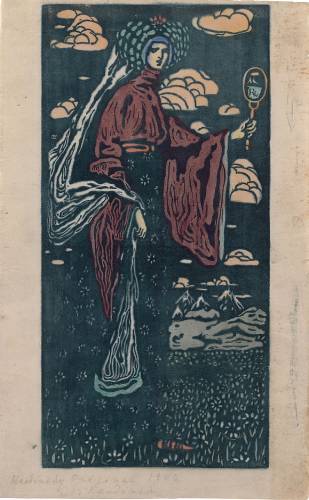
Vasily Kandinsky – The Mirror (1907)
Linocut Boy (Active in the 21st century)
Linocut Boy, a contemporary printmaker, is known for his beautifully crafted lino prints that often feature wildlife and nature themes. His work demonstrates a keen eye for detail and a deep understanding of his chosen medium. One of his most captivating lino prints is the ‘Whale Linocut.’ This print showcases his exceptional talent in depicting the graceful movements and intricate patterns of the magnificent whale, capturing the essence of this majestic creature. The piece highlights Linocut Boy’s ability to create visually engaging compositions that resonate with viewers, further cementing his reputation as a skilled lino print artist.
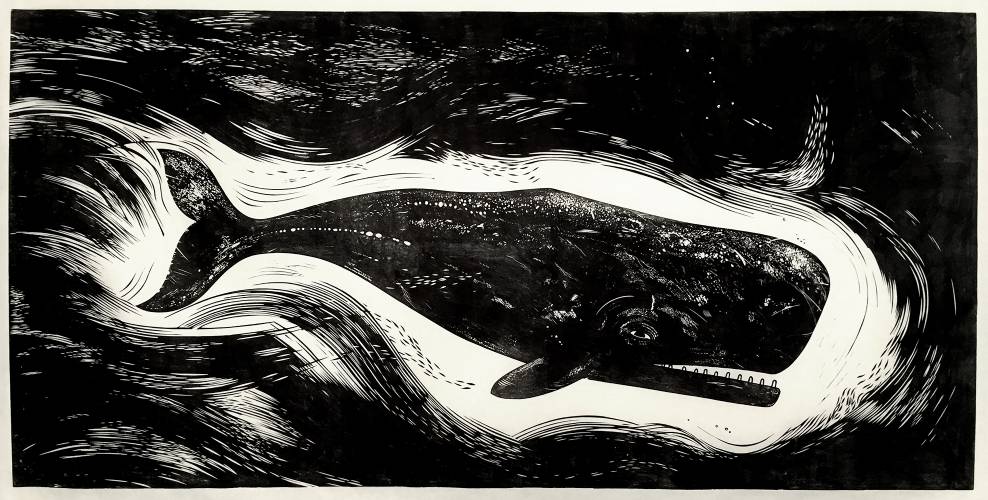
Linocut Boy – Whale Linocut
Swoon (Active in the 21st century)
Swoon, a contemporary American street artist and printmaker, is known for her large-scale, intricately detailed wheat-paste prints and paper cutouts that often depict people and their environments. Her work in lino printing demonstrates her exceptional skill in creating powerful, thought-provoking images that resonate with viewers. ‘Moni and the Sphynx,’ one of Swoon’s remarkable lino prints, features a compelling portrait of a woman alongside a mythical creature, the Sphynx. This piece showcases Swoon’s ability to blend portraiture and symbolism, resulting in an evocative work of art that invites contemplation and discussion.

Swoon – Moni and the Sphynx (2011)
Conclusion
Throughout history, lino printing has served as a powerful and versatile medium for artistic expression. From the innovative methods of Pablo Picasso to the contemporary street art of Swoon, these ten artists have each left a unique mark on the world of lino printing. Their works display a mastery of form, composition, and technique, showcasing the vast potential of this art form. As we continue to appreciate the rich history of lino printing, we can also look forward to the new ways in which emerging artists will push the boundaries of this captivating medium.
These famous artists and their classic works of art have made their way into our modern society in various forms. Their prints are not only collected or exhibited, but also printed on T-shirts and other clothing. They also appear in everyday accessories and items such as Custom Enamel Pins or cell phone cases, which continue to deepen people’s memories of these classic arts.
If you’re feeling inspired by the history and potential of lino printing and would like to explore it yourself, you can try out the process by purchasing a lino printing kit. It’s a great way to get started and experiment with this timeless artistic technique.




